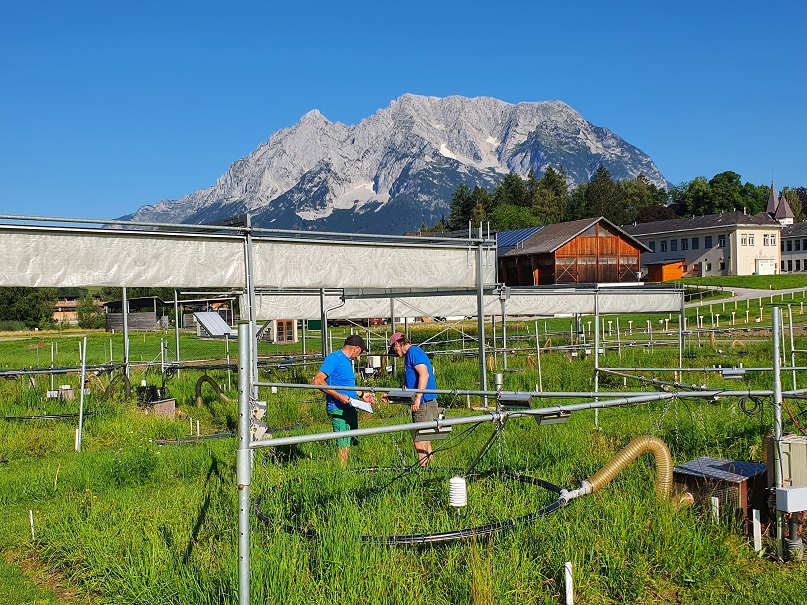With ClimGrassEco II, the previous work in ClimGrassEco I is continued and expanded. On a total of 54 test plots, the current climate is compared with a simulation consisting of the factors temperature and CO2 concentration in two combined gradations. In the middle of the 16 m² plots there is a fumigation ring on a height-adjustable frame that supplies ambient air enriched with CO2, as well as infrared radiators that heat the crop surface. The CO2 concentration measured on reference plots is increased by +150 ppm in the first stage and by +300 ppm in the second stage. The reference temperature is increased by +1.5 °C or + 3.0 °C. While the temperature is applied almost all year round, the CO2 with a distinguishable isotope signature (δ13C) is supplied during the day during the growing season.
In addition to the factors CO2 concentration and temperature, ClimGrass also supports the simulation of drought as a further combination of factors. For this purpose, water stress can be created in combination with the current and future climate on a total of twelve plots equipped with rain roofs. In order to provide the most holistic view of the grassland ecosystem, data is continuously collected using a lysimeter or soil gas measuring system that records the influence of climatic elements on the water balance and gas exchange in different soil levels. All experimental plots are managed as permanent meadows with three cuts per year and the same fertilization. Within the fumigation ring there are defined areas for various data collection such as experimental harvests, soil sampling or respiration measurements. Eight plots are each equipped with twelve mesocosms, which allow additional gradation with different nutrient supplies. Smart field lysimeters were installed on four of these mesosome plots for detailed observation of the soil water balance during the course of drought experiments.
Schaumberger, A.; Herndl , M. and Bahn, M. (2021): ClimGrass: Multifactorial outdoor experiment to research the effects of climate change on grassland. 21st Austrian Climate Day, online, Climate Change Center Austria (CCCA), 22-23.






